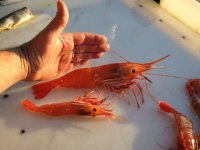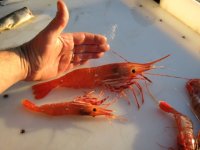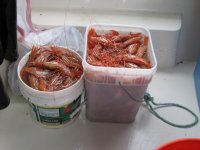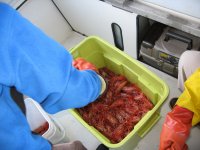I mounted my transducer inside the boat in the small recess where the bilge pump sets. I built a tape enclosure around it and poured in about an ounce or fiberglass resin to seal it in place and fill in voids around it. Because of the recess this spot does not have the balsa core and is solid fiberglass so the transducer shoots through OK. So far, I have only used it only one time in under 100 feet and it worked well. I used this method on my houseboat and was getting good readings down to 500 feet at Powell dam.
The gentleman that showed me this said that for it to work you must have solid fiberglass between the transducer and the water
I like not having to run the wire down the back of the boat and put screw holes into the transom.
The gentleman that showed me this said that for it to work you must have solid fiberglass between the transducer and the water
I like not having to run the wire down the back of the boat and put screw holes into the transom.




